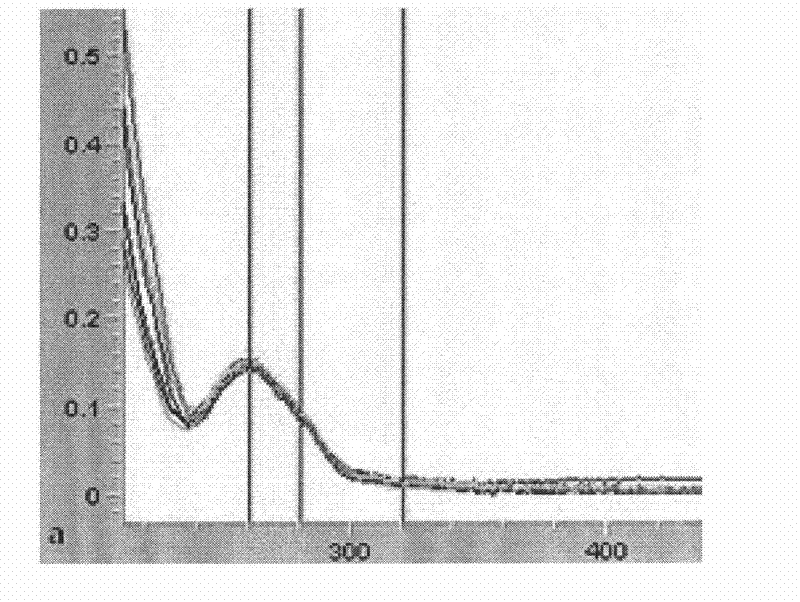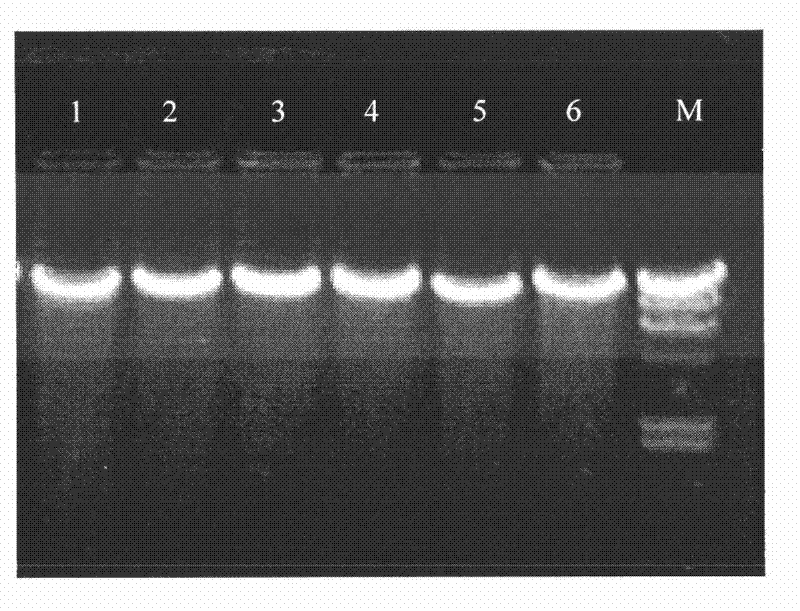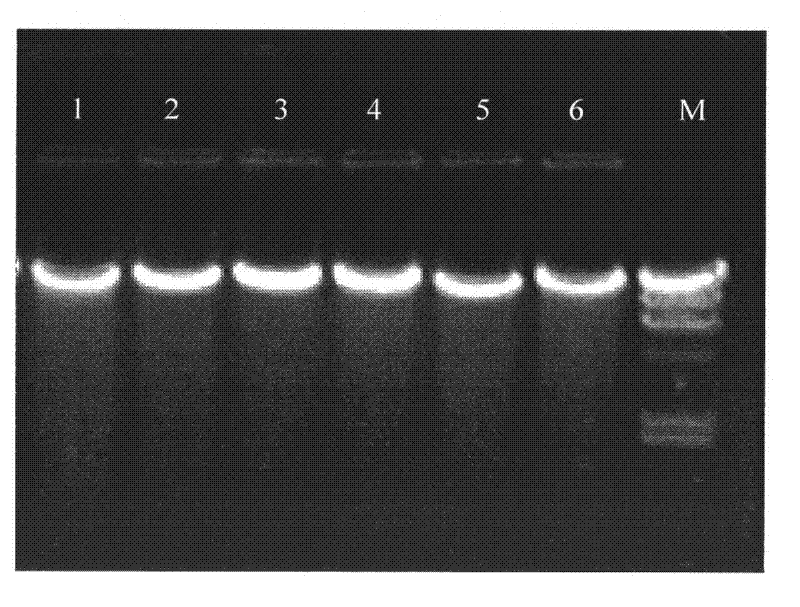Method for extracting large numbers of DNA with magnetic particulate
A magnetic particle, a large number of technologies, applied in the direction of DNA preparation, recombinant DNA technology, etc., can solve the problems of unsatisfactory extraction of a large amount of DNA, lower yield, inconvenient operation, etc., to shorten the time of DNA extraction, shorten the time, and avoid damage Effect
- Summary
- Abstract
- Description
- Claims
- Application Information
AI Technical Summary
Problems solved by technology
Method used
Image
Examples
Embodiment 1
[0031] (1) Pretreatment of magnetic particles: transfer 1 ml of magnetic particles into a 10 ml centrifuge tube with a pipette. Magnetically separate until the supernatant is clear and discard the supernatant. Take out the centrifuge tube from the magnetic separator, add 3ml of binding solution (the binding solution is a mixed solution of polyethylene glycol and salt, wherein the concentration of polyethylene glycol is 10%, and the salt is NaCl with a concentration of 1M), blow and mix ,spare.
[0032] (2) Sample cracking: Add 200 μl proteinase K solution to the bottom of a 10ml centrifuge tube, add 1ml blood sample (or 100mg tissue sample) and 2ml guanidine hydrochloride lysis solution (the concentration of guanidine hydrochloride lysis solution is 4M, and the composition is: 3 ~4M GuHCl, 0.01~0.02M EDTA, 0.01~0.02M NaCl and 4~6% TX-100), pipetting and mixing, fully cracking in 56°C water bath for 5min.
[0033] (3) Add the pretreated magnetic particles in step (1) into the...
Embodiment 2
[0037] (1) Pretreatment of magnetic particles: transfer 6 ml of magnetic particles into a 50 ml centrifuge tube with a pipette. Magnetically separate until the supernatant is clear and discard the supernatant. Take out the centrifuge tube from the magnetic separator, add 18ml of binding solution (the binding solution is a mixed solution of polyethylene glycol and salt, wherein the concentration of polyethylene glycol is 10%, and the salt is NaCl with a concentration of 3M), blow and mix ,spare.
[0038] (2) Sample lysis: Add 1.2ml proteinase K solution to the bottom of a 50ml centrifuge tube, add 6ml blood sample (or 600mg tissue sample), 12ml guanidine hydrochloride lysate with a concentration of 5M, and 6μl RNase with a concentration of 10mg / ml Solution A, blow and mix evenly, take a water bath at 20-70°C for 10 minutes, and the effect is best in a water bath at 56°C.
[0039](3) Add the pretreated magnetic particles in step (1) into the lysed cell solution in step (2), mi...
Embodiment 3
[0043] (1) Pretreatment of magnetic particles: transfer 10 ml of magnetic particles into a 50 ml centrifuge tube with a pipette. Magnetically separate until the supernatant is clear and discard the supernatant. Take out the centrifuge tube from the magnetic separator, add 20ml of binding solution (the binding solution is a mixed solution of polyethylene glycol and salt, wherein the concentration of polyethylene glycol is 15%, and the salt is NaCl with a concentration of 5M), blow and mix ,spare.
[0044] (2) Sample cracking: Add 2ml proteinase K solution to the bottom of a 50ml centrifuge tube, add 10ml blood sample (or 1000mg tissue sample), 20ml guanidine hydrochloride lysis solution (the concentration of guanidine hydrochloride lysis solution is 6M, and the composition is: 3 ~4M GuHCl, 0.01~0.02M EDTA, 0.01~0.02M NaCl and 4~6% TX-100), pipetting and mixing, fully cracking in 56°C water bath for 20min.
[0045] (3) Add the pretreated magnetic particles in step (1) into the...
PUM
 Login to View More
Login to View More Abstract
Description
Claims
Application Information
 Login to View More
Login to View More - R&D
- Intellectual Property
- Life Sciences
- Materials
- Tech Scout
- Unparalleled Data Quality
- Higher Quality Content
- 60% Fewer Hallucinations
Browse by: Latest US Patents, China's latest patents, Technical Efficacy Thesaurus, Application Domain, Technology Topic, Popular Technical Reports.
© 2025 PatSnap. All rights reserved.Legal|Privacy policy|Modern Slavery Act Transparency Statement|Sitemap|About US| Contact US: help@patsnap.com



